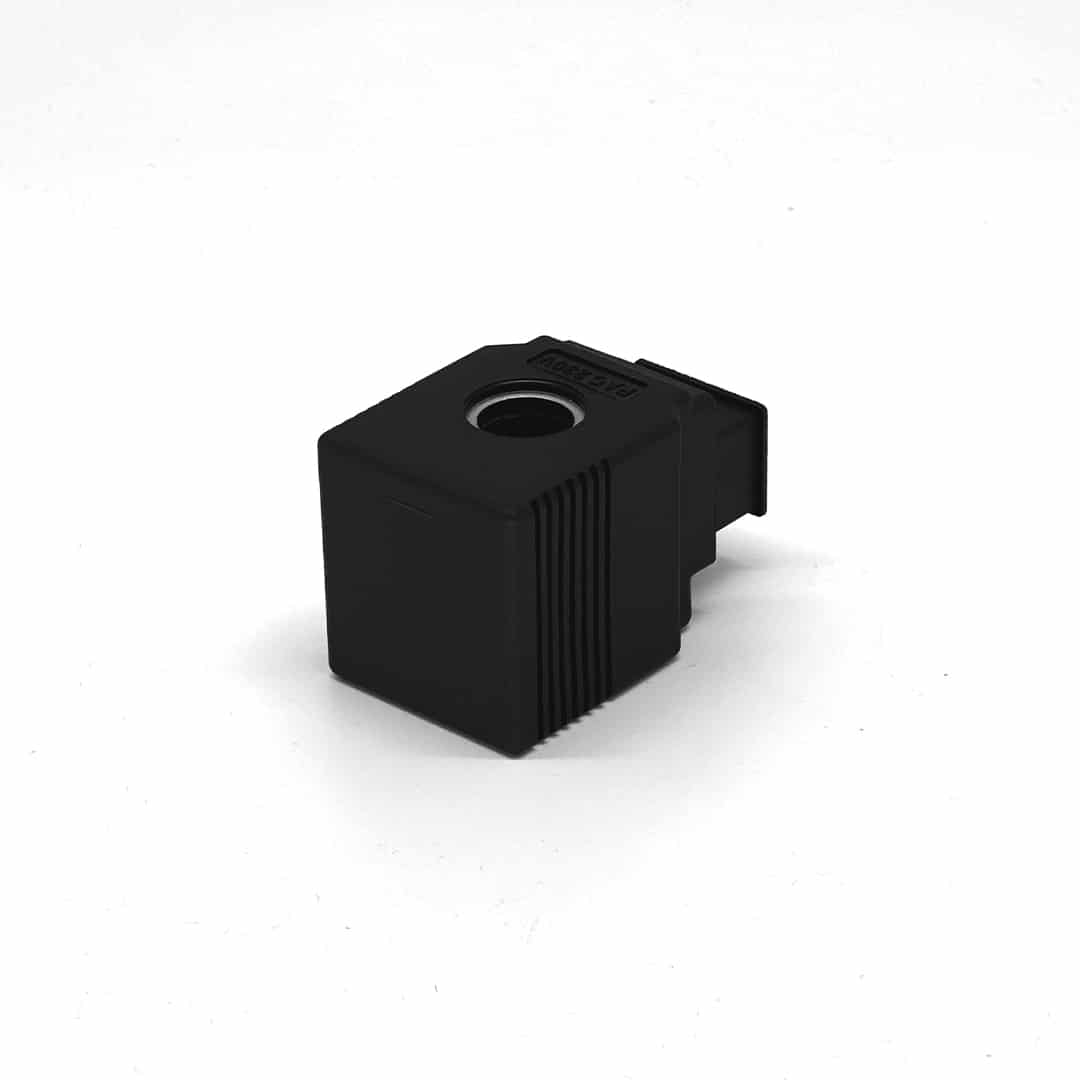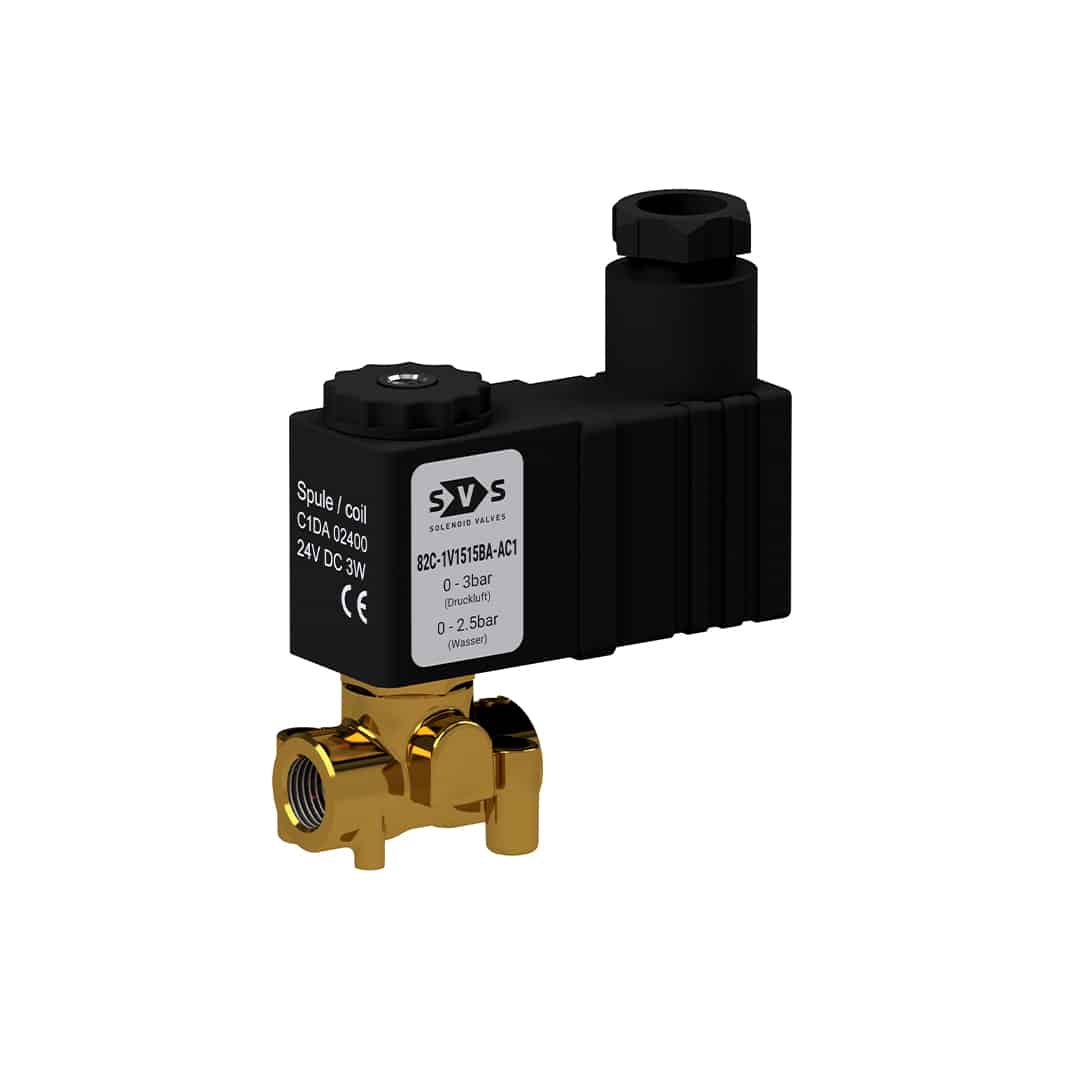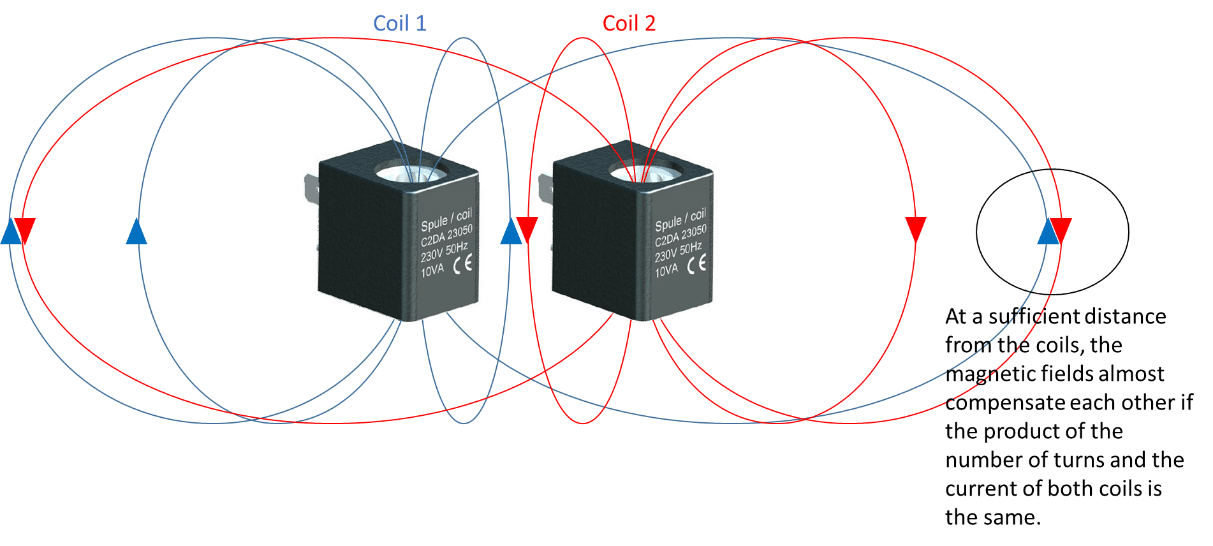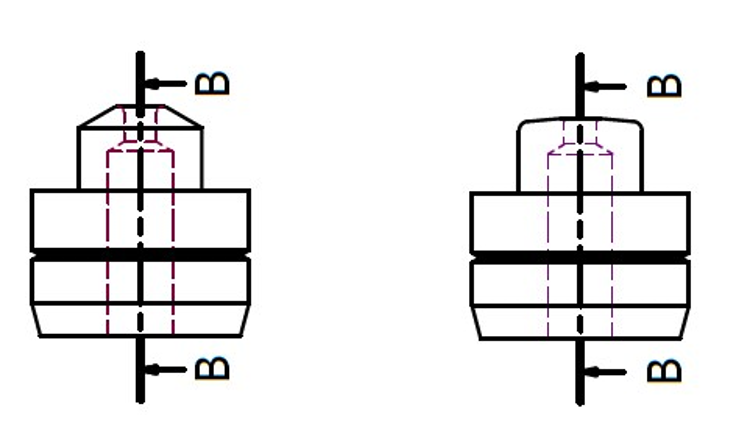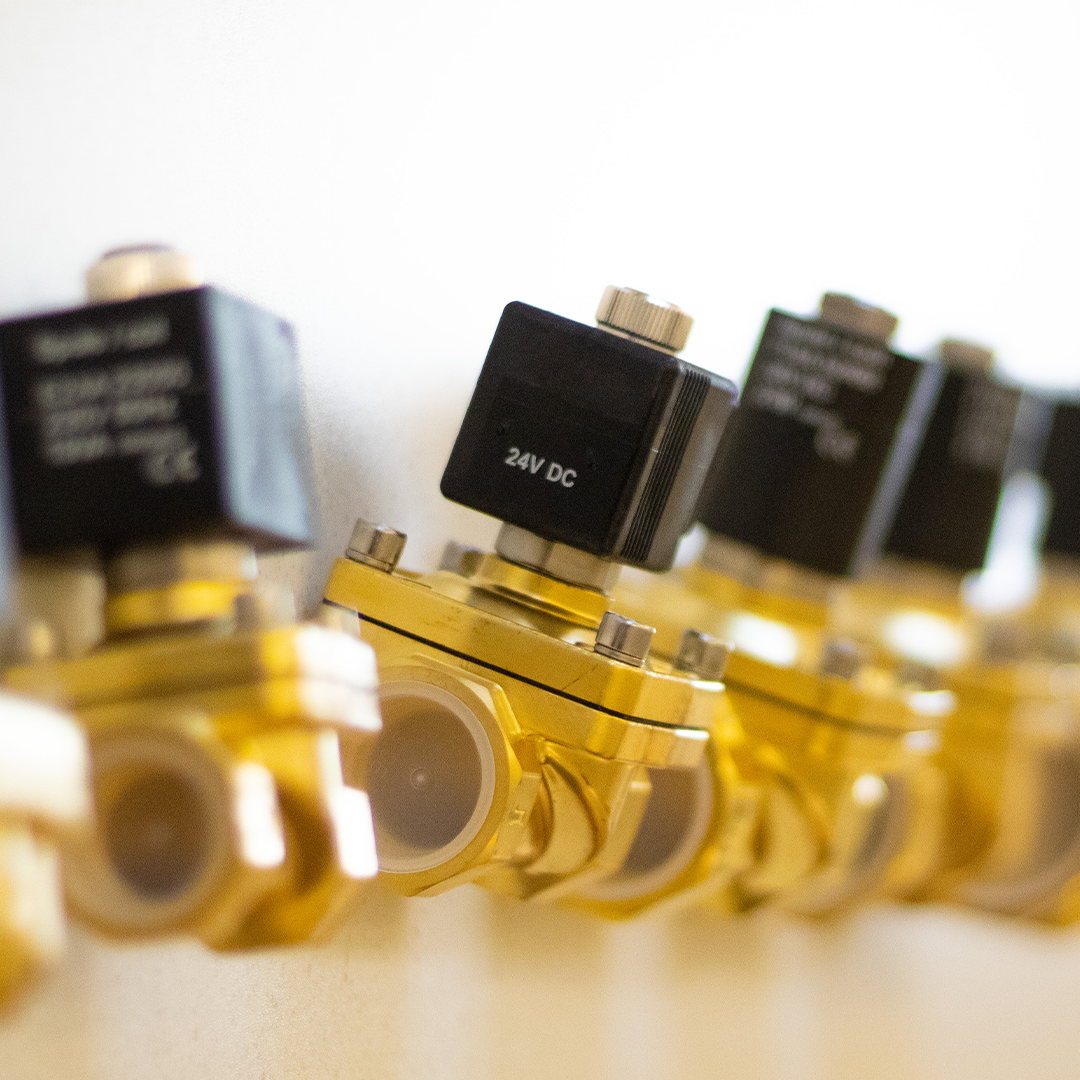The electromagnetic force of a coil
The electromagnetic force of a coil arises due to a change in magnetic resistance in the iron circuit of the solenoid valve. This change in magnetic resistance is due to the air gap between the magnetic core and the pole of the guide tube, since air is a much poorer magnetic conductor than the used stainless steel. The resulting electromagnetic force strives to reduce this magnetic resistance and to close the air gap. This pulls the moving magnetic core of the solenoid valve to the pole. The electromagnetic force of the magnet system is calculated using a simplified approach and considering
- the coil current
I, - the number of turns of the coil
N, - the length of the air gap or the stroke of the solenoid valve δ,
- the area Airon of the pole or the magnetic core,
to 
The induced electromagnetic force is therefore proportional to the square of
- the current in the coil
I, - the number of turns
N, - the reciprocal of the air gap length or core stroke
 .
.
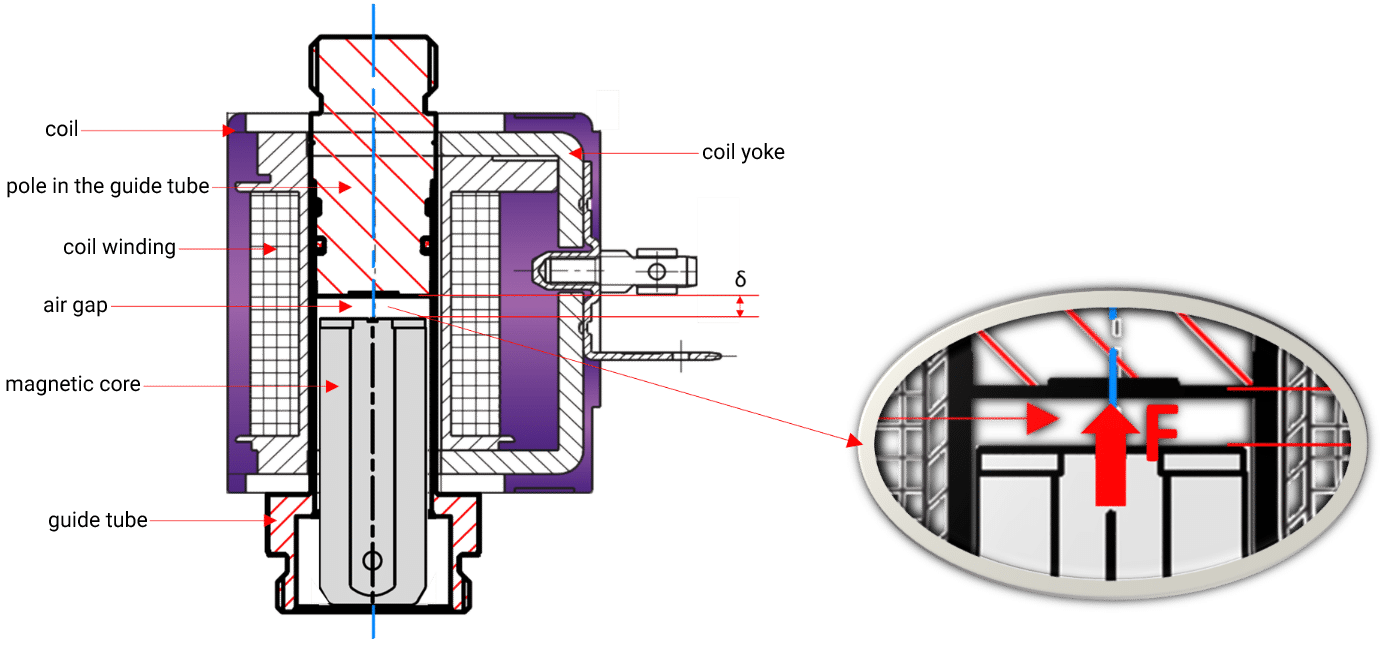
Energy Saving Opportunities
Voltage reduction through pulse width modulation
In the case of DC solenoids, the use of a pulse width modulated DC voltage is common, which is already implemented, for example, in the form of power reduction plugs. The DC voltage is pulsed with a frequency of 170Hz, for example, and the ratio TOn/TOff is typically set to 60/40. This reduces the effective supply voltage of the solenoid to 60% and thus the power consumption to approx. 36% compared to a solenoid that is operated at nominal voltage.
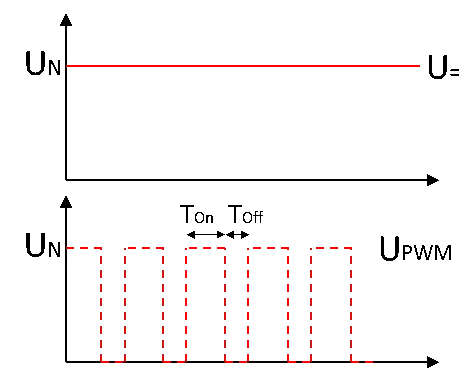
Power reduction with AC voltage
A power reduction in AC solenoids is extremely rarely realized. The reason for this is that AC solenoids have a high power consumption during the switch-on process, but then consume significantly less power in continuous operation. AC solenoids therefore heat up less than comparable DC coils. Technical solutions for reducing the power of AC coils would be e.g.
- a voltage drop,
- a frequency increase,
- double coils that are first operated parallel and later in series,
the practical implementation, on the other hand, requires enormous effort. A somewhat simpler method would be to use coils designed for rectified AC voltage without voltage smoothing. The use of a controlled rectifier circuit allows the coil to be supplied with both half-waves of the rectified, sinusoidal AC voltage when it is switched on. After switching on, a change is made to half-wave rectification and the effective value of the supply voltage is thus halved.
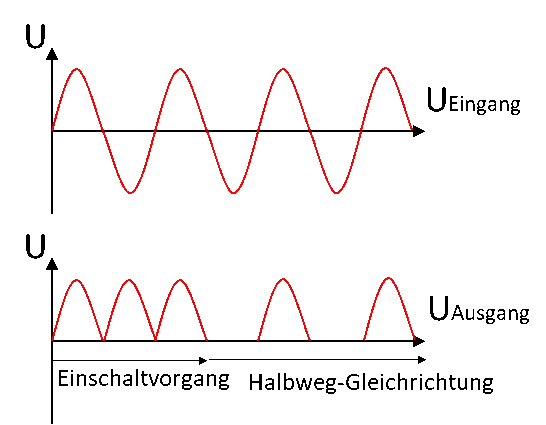
Large volume coils for reduced power consumption
The above formula for calculating the electromagnetic force shows that the force of the solenoid depends on the number of turns and the current (I.N) :

In order to generate the same electromagnetic force, it’s possible to reduce the current consumption I and therefore the power consumed by the solenoid if the number of turns N is increased to the same extent. Assuming a constant electromagnetic force, a large coil with a comparatively large number of turns therefore offers higher electrical efficiency than a small coil with fewer turns, which has to generate the same electromagnetic force through increased current consumption and thus an increased power requirement. However, the need for more turns and therefore more installation space leads to higher costs for the solenoid.

